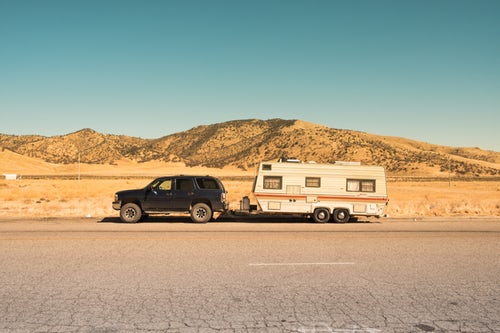MORE AND MORE AUSTRALIANS are setting off on the great “round Australia” jaunt with a caravan hitched up behind. And, of course, it’s a regular occurrence to hitch a trailer up behind the family car and cart a load of rubbish to the local dump (sorry, “waste recycling centre”).
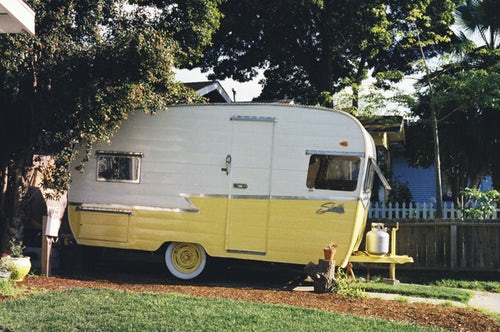
Practice.
One of the most daunting aspects of towing is having to reverse. Somehow, everything seems counter-intuitive, and it’s even more difficult if half the caravan park is watching you and judging your performance. If you are inexperienced in towing, the best advice is to get as much practice as possible, somewhere safe and open. This will give you greater confidence, and a better feel for the capabilities and dimensions of your caravan or trailer.
Check everything.
Before you hitch up a caravan, horse float, boat trailer or anything else, check that the towing capacity of your car and towbar are suitable. The drawbar of the caravan or trailer should be level with the car. If the back of the car is being weighed down (sitting lower than usual), you will need to consider using a weight distribution hitch to spread the weight of the caravan or trailer over all four wheels of the towing vehicle. Towing when the rear of the car is under load lightens the weight on the front wheels and can have major effects on steering and braking.
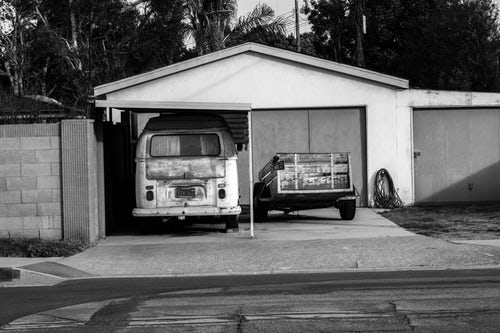
Have it serviced.
People seem to recognise the need to have their car serviced before embarking on a long journey, but often overlook the equal importance of having the caravan or trailer serviced. A trailer or caravan breakdown can not only be inconvenient, it is potentially dangerous. A pre-trip check-up may identify possible problems and allow you to fix them before they cause major issues.
Learn towing etiquette.
If you are on the open road and towing a caravan or heavy trailer, consider others.
- Don’t make any sudden movements and apply brake, accelerator and steering gently
- Allow for the extra length and width of your rig when entering and exiting traffic
- Maintain a safe distance between yourself and vehicles ahead. Your braking distance will be increased by the additional weight, so stay at least 60m back from vehicles ahead wherever possible
- When towing downhill, put your car into a lower gear to avoid unnecessary pressure on the brakes
- Allow extra time and distance to overtake and don’t underestimate how long it will take you to get past and back onto your own side of the road
- If you have a trail of vehicles behind you, pull over when possible and allow them to overtake
Before you set out, there are a number of safety checks you can and should carry out.
Tyres, oils and coolant.
Keeping a constant eye on the condition and pressure of your tyres is always important, but even more so when you are planning to tow. The additional load puts added stress on your vehicle and its tyres. Make sure all tyres are inflated to the correct pressure as detailed in your owner’s manual. Ensure that there is at least 1.5mm tread depth across the whole of the tyre, including the spare wheel/s. If you’re setting out on an extended journey, make sure you carry a suitable jack and wheel brace. Check the oil and coolant levels in the tow vehicle and top them up if necessary. Also ensure that there are no leaks.
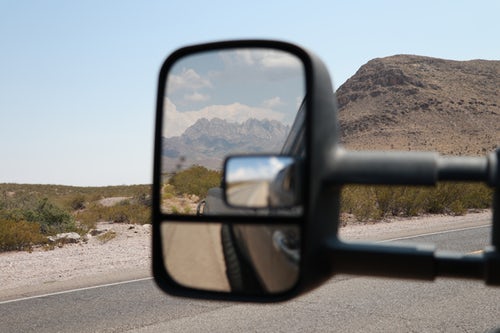
Vision.
Towing a large caravan or other trailer can obstruct the view using your standard rear vision mirrors. Since towing requires you to be aware of what is going on all around your vehicle, this can be dangerous. If your caravan or trailer impedes vision using your rear vision mirrors, consider buying extensions for your side-view mirrors to allow you to see past your caravan or trailer. Although these are not legally required, driving a vehicle without a clear view of the road and surrounding traffic can incur a penalty. (A simple test is to attach your trailer or caravan and then go and stand about 20 metres and directly behind each of the rearmost corners. If you can see the entire mirror, you are probably compliant. If not, you need to attach extension mirrors. A camera fitted to the rear of a van is not a replacement for good mirrors – it will show you what is directly behind, but not the crucial areas alongside, vision that’s vital for safe lane changing and overtaking.) In most states, it is illegal to have extended mirrors fitted to a vehicle that isn’t towing, so remember to remove them when you unhitch your trailer or caravan.
Lights.
Turn signals, brake lights and tail lights mean other road users can see you at night and understand your intentions. It is vital that they be fully operational. Check that they are all working and replace any globes or LEDs that fail to operate. Check the wiring and ensure there is a good and continuous connection.
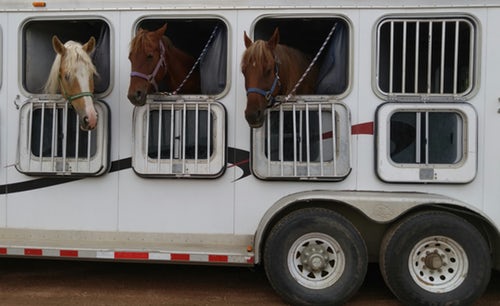
Don’t overload.
By law, the load you are towing cannot exceed the towing capacity of the vehicle and the towbar fitted. Towing capacities will be listed in your vehicle owner’s manual. Be aware that some vehicles are not approved for towing at all. A plaque on the towbar should specify the maximum weight it is approved to tow. If you tow above any of these capacities, not only will it put excessive strain on your vehicle, it will also have a potentially dangerous effect on braking and steering. Should you be apprehended, you could face a substantial fine. And if you are involved in a collision, it will almost certainly make any insurance claim you may make invalid.
Chains and shackles.
Safety chains are essential to ensure whatever you are towing isn’t able to break away and potentially cause damage or injury to other road users. Trailers and caravans up to 2.5 tonnes are required to be connected to the towing vehicle with one safety chain. Those between 2.5 and 3.5 tonnes must have at least two safety chains. If you are using a D shackle to attach the safety chain/s to your towbar, make sure you are using shackles with the correct load rating. (Rules regarding shackles are vague, at best. South Australian police say it is not an offence to have a non-rated D-shackle connecting the chains of a caravan, trailer or horse float. However, we have heard of police in other states targeting tow vehicles and issuing expiation notices for D-shackles without the correct load rating. In any case, it is in your own best interests to use the correct D-shackle. A shackle that complies with Australian Standard AS2741 will be stamped with rating information but the lack of such stamping is not proof that the shackle does not meet the law.)
Loading correctly.
While you may be tempted to try and cram everything you might need into your caravan, consider whether it will all actually fit. A load is not allowed to protrude more than 15cm from the side of your trailer and you are not allowed to exceed a total width of 2.5m. The combined tow vehicle and caravan or trailer must not exceed 19m. If any items protrude more than 1.2m beyond the back of the trailer, you’ll need to attach a brightly coloured flag that other motorists and road users can see from 300m during the day. If towing at night with anything sticking out more than 1.2m from the back, you’ll need to attach a red light that’s visible for 200m.
There are hefty penalties for having an insecure or overhanging load.
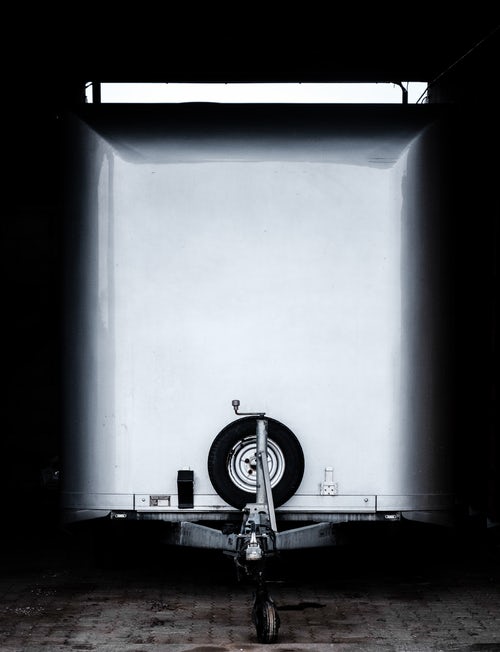
Packing.
There’s an art to packing a caravan or trailer and it comes down to weight distribution. Start off with the heavy items and make sure they are securely restrained so they won’t shift if you have to brake suddenly. If at all possible, keep the heaviest items in the centre, above the axle. Position medium weight items to either side and the lightest items on top to maintain the optimum front-to-rear balance. This means your trailer or caravan is less likely to become unstable on the road. Another consideration is that an incorrectly loaded trailer or caravan can put too much weight on your towbar. This will reduce the effectiveness of your steering and braking, and raise the angle of your headlights, potentially dazzling oncoming traffic.
Number plates.
Legally, you are required to display a number plate on the trailer, caravan or horse float you are towing (although trailers in Victoria are not required to have a separate number plate, but must display the registration number of the tow vehicle). The number plate is required to be fitted between 30cm and 130cm above the ground, must be level with the ground and the sides should be vertical and must be clearly legible from 20 metres. If your number plate contravenes these rules, there are substantial penalties.
Beware the differing rules from state to state.
As usual, we warn drivers intending to travel interstate that rules governing what is and isn’t legal when towing will vary. If you are crossing a state border, check the local rules to ensure you are not unintentionally in contravention.
